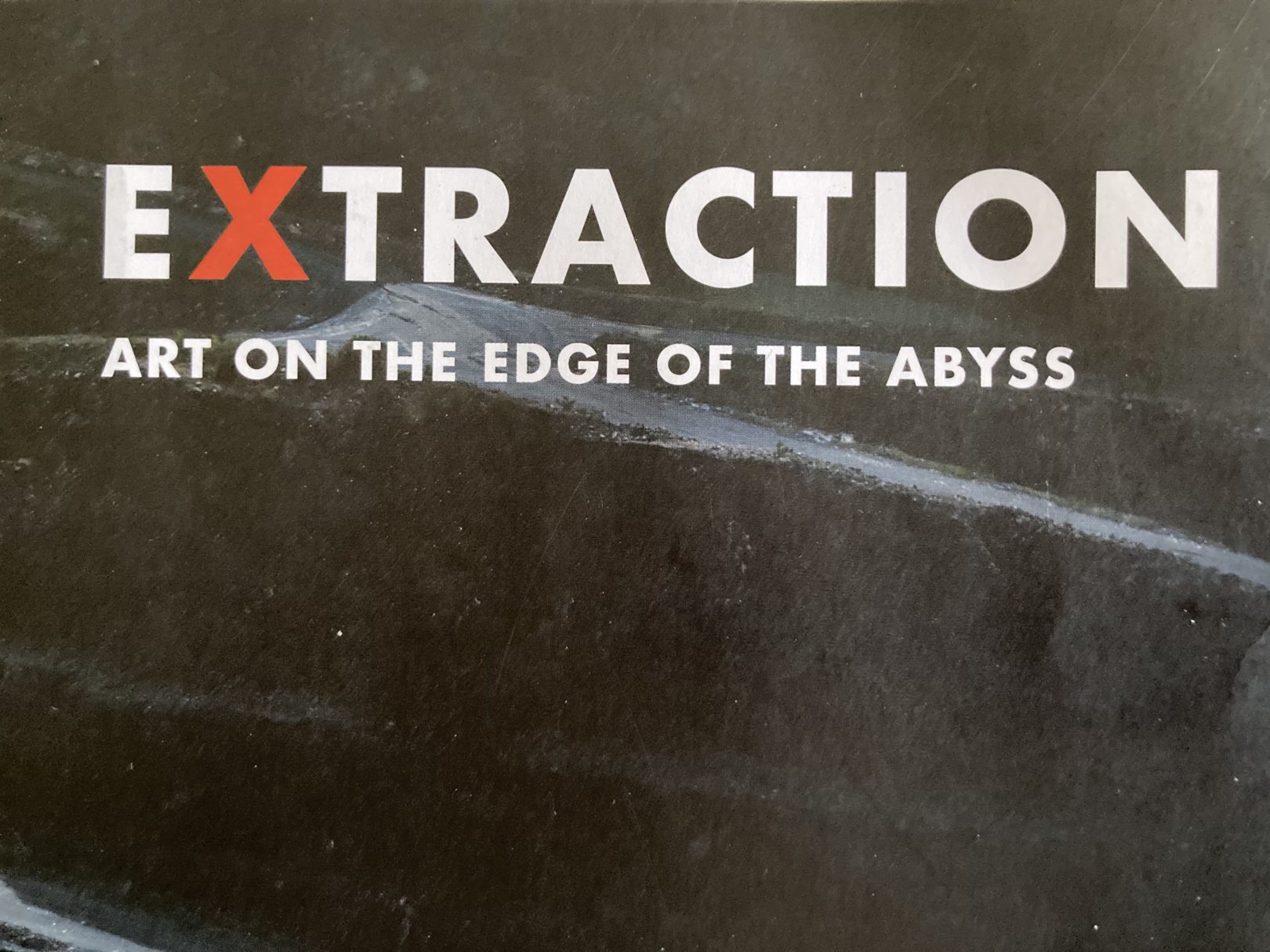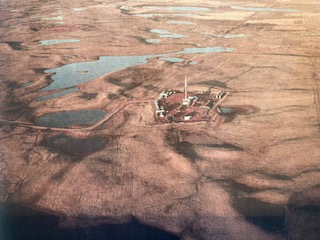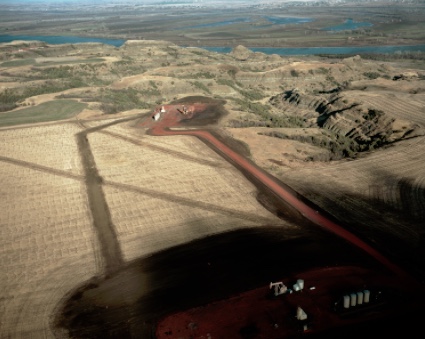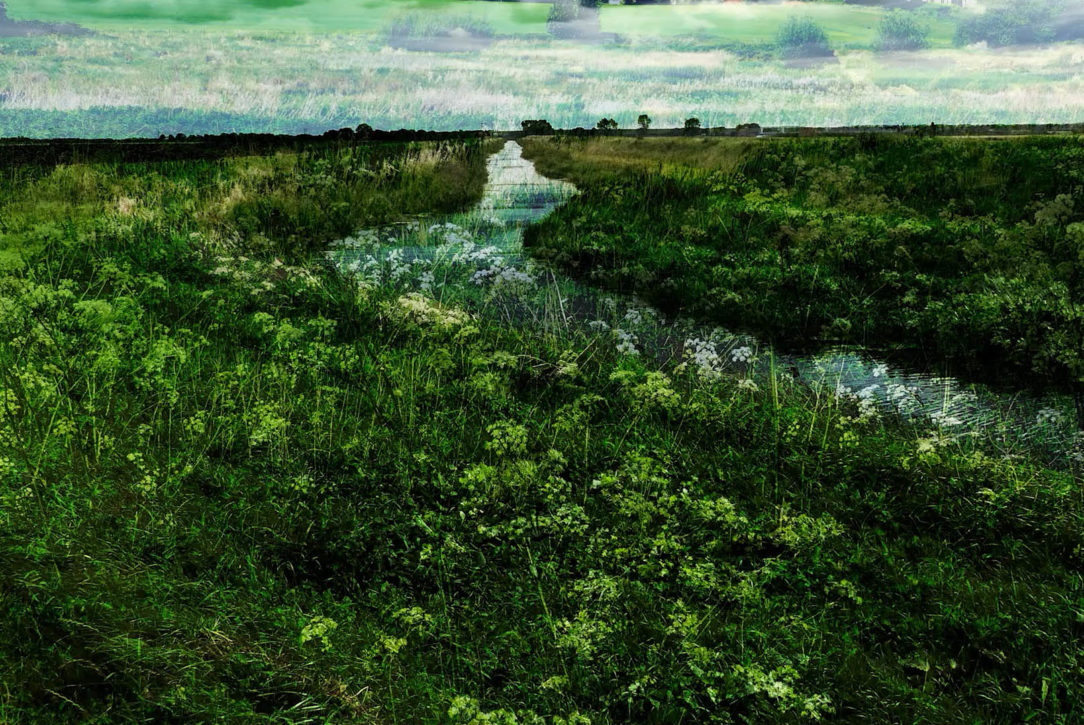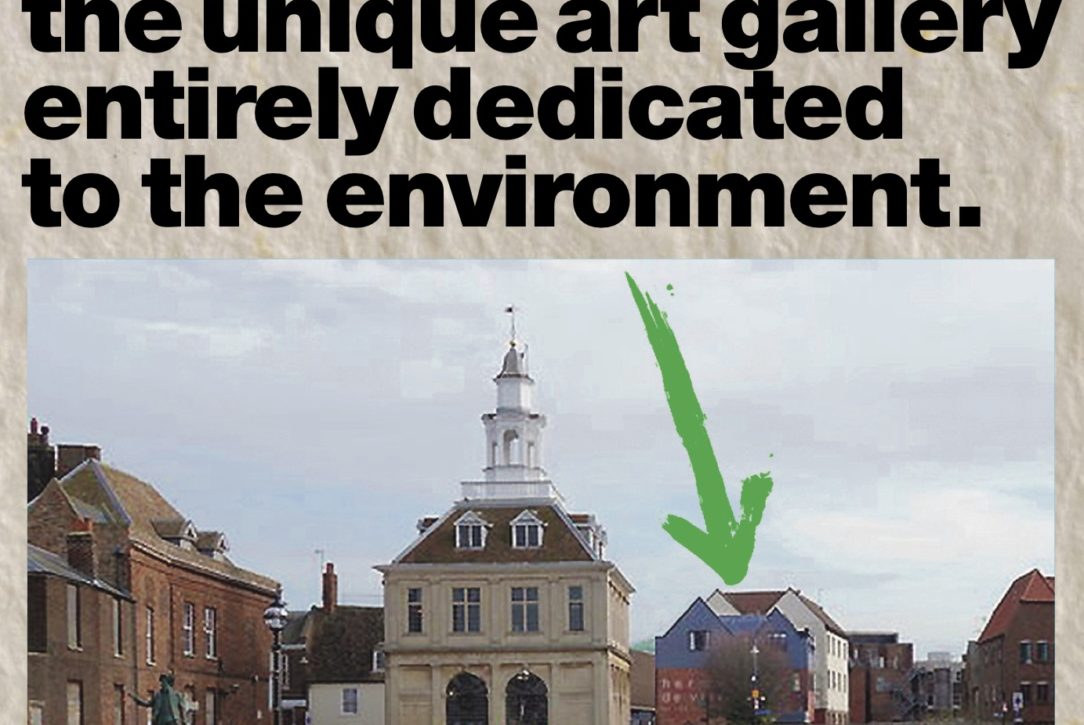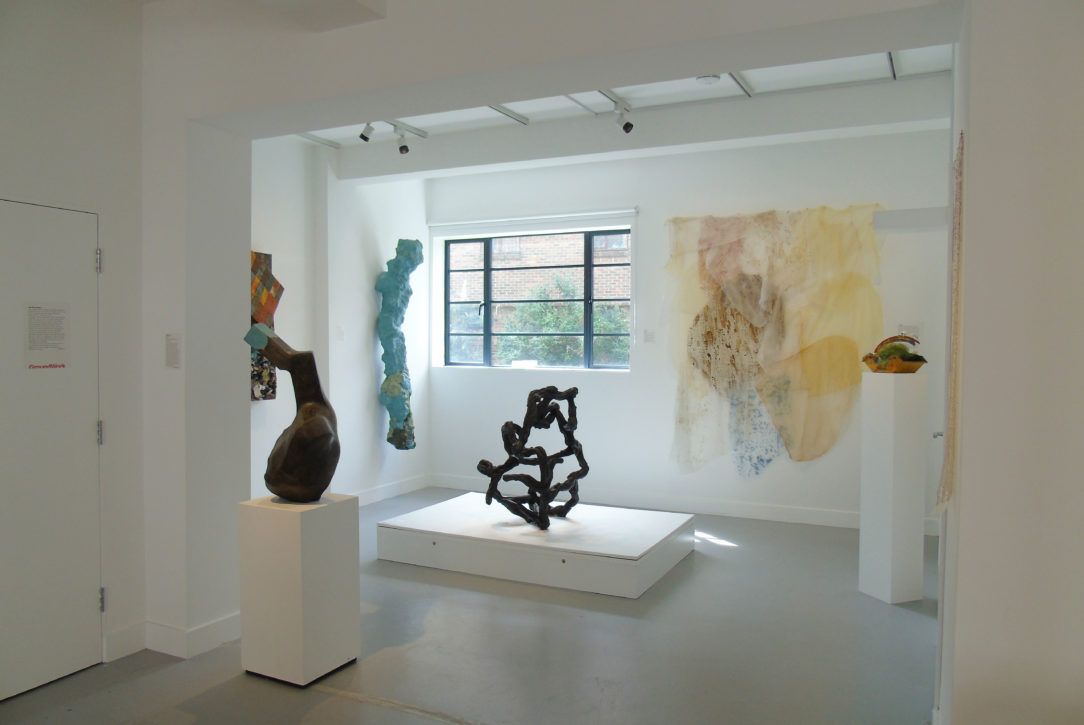A huge ‘Extraction Art on the Edge of the Abyss’ project in the United States is ‘raising a ruckus’ globally to stop environmental damage. It began in the United States in 2018, initiated by the CODEX Foundation in Berkeley California. The late Edwin Dobb and Peter Rutledge Koch started it all. They wanted to rally round as many organisations and artists as possible around the problems of extraction. Extraction happens everywhere in the world. Yet In the vast tracts of the United States and northern Canada, it is especially a massive issue.
Extractive industries have enormously accelerated in our lifetime. We have become dependent on the technologies and life-styles enabled by fossil fuels. Because of the extraction of coal, gas, and most of all oil – we can power machinery and industry. We can move about freely by road, sea and air, and heat our homes. As a consequence, our greed for it all has grown exponentially.
We sometimes forget how recently all this has happened. But now, our over-exploitation is becoming ever clearer with increasingly dramatic consequences for our changing climate. The earth is re-stabilising. If we don’t change our ways and moderate our demands on it, it will increasingly survive without us.
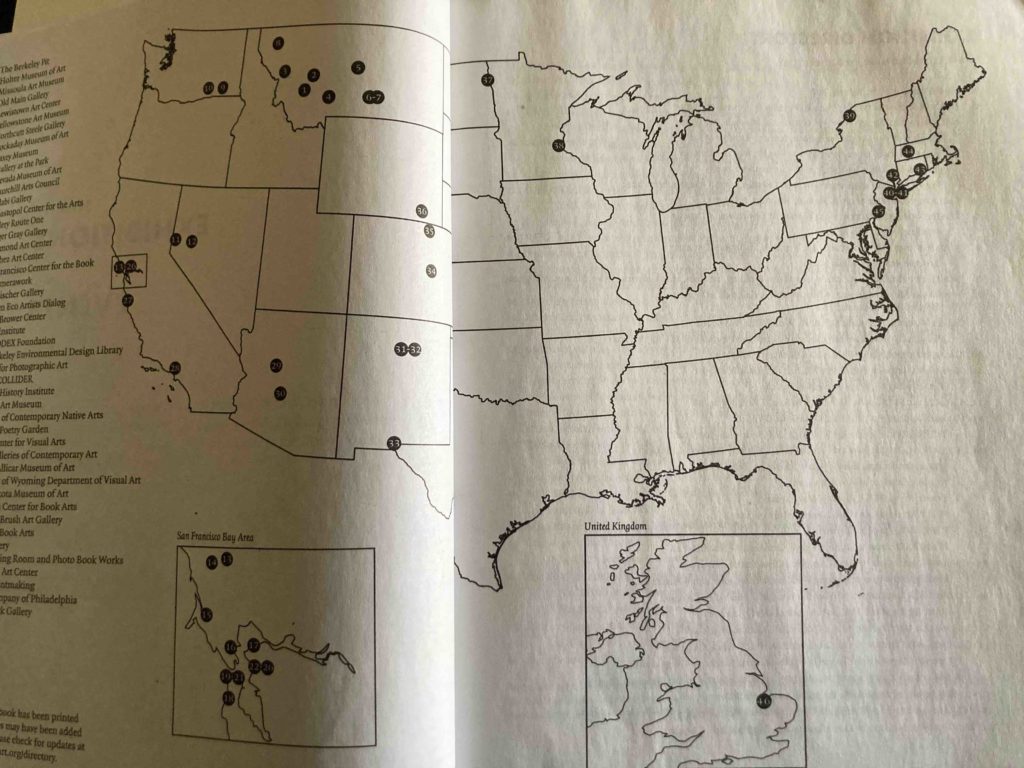
A call to arts
As the first stage in ‘raising a ruckus’, in 2020, Sam Pelts edited an impressive book for the Codex foundation. It lists 45 United States organisations, and so far just GroundWork Gallery in the UK. The book also represents hundreds of contributions from artists and writers globally. All are passionate in their ideas, commitment and knowledge. It lays the foundation for what we hope will indeed become a global movement to bring to light all the many extraction issues we face.
Michael Traynor’s afterward for the American Extraction volume makes the point that despite what we know about the inevitability of climate change, none of the professions, from science to law to public policy has succeeded in countering this global trend for unsustainable extraction. The greed, the ignorance, the environmental injustice – all remain. The trouble is, they are too weakly challenged. We need to stop them.
He calls for the arts and sciences to collaborate and bring their strengths together. Above all, he calls on artists to bring their creativity, spirit and emotional sensibility to the challenge of protecting and reclaiming our environment. Artists remind us of our humanity and renew our determination to care for our earth and our descendants. Artists have lasting influence.
GroundWork Gallery’s Extraction Projects
GroundWork Gallery is delighted to participate in the Extraction Art on the Edge of the Abyss programme. Like the whole team who created this remarkable project, we have long believed that art and artists must play a part in increasing our care for the environment. The impact of art starts with a deeper insight and understanding. Then hopefully that leads to inspiration and influence.
You can read about our project outline on the project pages of this website here. It is still in development but will take place in the summers of 2021 and 2022. In the meantime we are all learning from our global cousins via Extraction Art on the Edge of the Abyss.
EXTRACTION: A collective global exclamation: “Enough”
A strong character emerges from even this initial collection of projects, of huge scale and great ambition. This applies both to the size of extraction projects, but also to the artistic responses to them. There are many, many inspiring and significant contributions by artists in this book. I just want to pick out 3 examples of projects to reference, which especially strike a powerful chord. One is from the US, one from Canada and one from Japan.
There is a whole lot more to look at, to discuss, to relate to and to learn from. But here are 3 powerful projects, exemplary in linking art and environment and a campaigning story.
‘The true cost of oil’
There are many powerful works and references to oil extraction. However, Garth Lenz produces some of the most devastating images and statistics in his series of images ‘The True Cost of Oil’. He documents the Alberta Tar Sands, the world’s third largest oil reserves. Exploiting this resource involves removing of the boreal first eco-system, threatening an adjacent Ramsar designated wetland and Unesco Cultural Heritage Site, considered to be the world’s largest freshwater delta.
Critical levels of pollution are toxifying water, causing high levels of cancer in the indigenous population, impacting the world’s rarest herds of wild bison and migratory bird habitats. Lenz’s images show how these fragile eco-systems are being scraped away relentlessly and replaced by an industrial complex producing more carbon than the entire country of Denmark.
How do we respond to this? By repeating it, showing it, talking about it – and applying pressure wherever we can to get this terrible devastation stopped. And by using our consumer power to stop using oil wherever we can.
The North Dakota oil boom
Terry Evans and Elizabeth Farnsworth
Several artists are documenting the terrible blight on environment and landscape of oil drilling and fracking in North Dakota. Terry Evans has done a remarkable job together with writer Elizabeth Farnsworth in telling the stories of mineral exploitation on North Dakota farmland. It is of particular interest for us at GroundWork as she has documented and involved the communities, which is very much what we want to do with our forthcoming extraction projects.
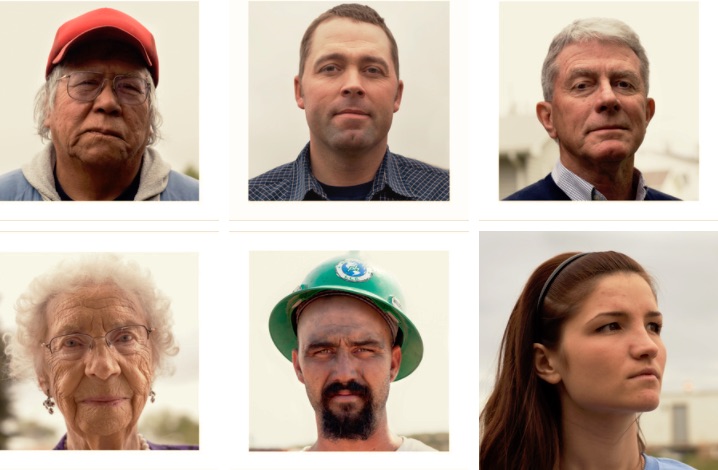
Sarah Christianson
Photographer Sarah Christianson’s ‘Oil Boom’ works are all the more devastating as she admits that her family profited from the industry in the past. Her grandparents allowed oil wells on their farmland in 1912. She is critical of this, as she states: ‘I started this project to reconcile our involvement with the hidden costs of this prosperity.’
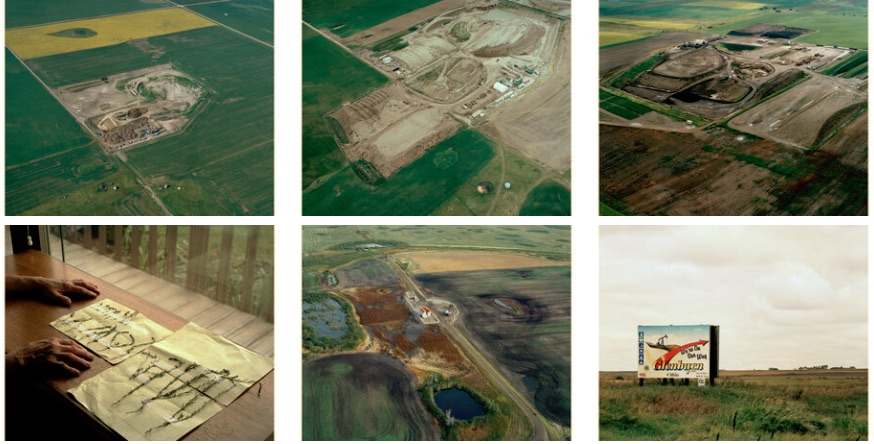
Further, she quotes the Governor’s statement from 1973:
We simply want to insure the most efficient and environmentally sound method of utilizing our precious resources for the benefit of the broadest number of people possible. And when we are through with that and the landscape is quiet again…let those who follow and repopulate the land be able to say, our grandparents did their job well. The land is as good and in some cases better than before.”
North Dakota State Governor, 1973
And then remarks herself:
Unfortunately, his hope for the future remains a fantasy: our grandparents did not do their job well. I examine the scars from prior boom-and-bust cycles and the new wounds being inflicted upon my home because the status quo must change: something needs to be left for the next generation, not the next quarter.
Sarah Christianson
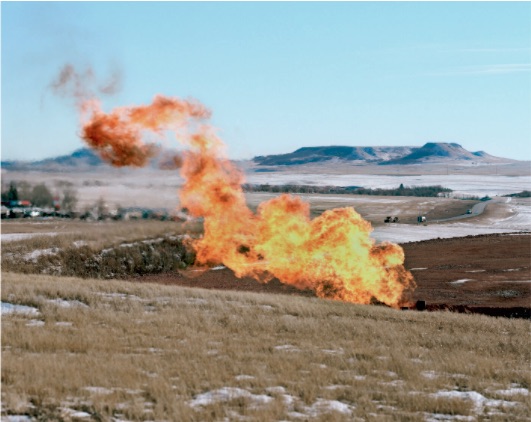
The aerial views give terrifying insights into flaring, wastage and oil spillages. These images, and her comments are a bit of a wake-up call for those of us who think naively that what we are doing to the earth is temporary. Extraction is permanent. It indeed has caused me to reflect on the much smaller-scale extraction projects we are planning at GroundWork Gallery. They do not concern fossil fuels, yet they are still of a scale which can be seen from space. As I said above – vigilance is necessary and our artists will look with interest at Sarah Christianson’s work and her brave admissions of culpability.
Fukushima nuclear radiation
This is a subject of particular relevance for GroundWork at the moment because of the current exhibition Japan Water. In that show, Hakan Topal’s work ‘Uniform Cut’, 2015, expecially touches on the aftermath of Fukushima, but in a very different way from this work here. Funnily enough, his work is much more about extraction, whereas this song is much more about the hidden threats of radiation.
Satomi Igarashi writes about musicians from Japan Rankin Taxi and the Ainu Dub Band, whose works sing of the unseen dangers of radioactivity ‘You Can’t See It and You Can’t Smell It Either’. It is both funny and alarming.
Extraction – extractivism
The Extraction Art on the Edge of the Abyss has opened up such an enormous complex of giant world problems. And a huge opportunity for artists to contribute their skills of creativity and communication to make the world take notice. Many of them have already set the example with such force as we see from the track record so far in the book and website. But there is still a long way to go and much work to do for communities to respond with action.
Humans have weilded relentless power to take from the earth. It is a daily almost thoughtless deed. The term extractivism describes the process of taking natural resources from the earth for the purpose of profit. Digging for treasure, mining for minerals, accumulating wealth. We are sympathetic to sustainable extraction, taking small amounts from one part of the world in order to make improvements in another. Thus we might regard turning rough stone into beautiful building facades, or clay minerals into talcum powder. But greedy over exploitation leading to ugly ruination, land and habitat loss for wildlife, that is what extractivism leads to and that is what we must argue against.
A note about our artists, partners and collaborators
Karen Frances Eng contributed a beautiful essay ‘Silt’, to the Extraction Art on the Edge of the Abyss volume. It is a story of her relationship with the Great Ouse River in our lovely town of King’s Lynn. King’s Lynn has itself suffered from extraction in the past, the peatlands around it have been repeatedly drained and channelled, so ultimately the town will probably be submerged as it silts up and the waters rise.
Chris Ruston is a book artist who cares deeply about the environment and makes often tiny reflective works to be held in the hand. For this project she is working on a series of larger extractive images.
As our extraction project develops we will post more information about the artists to be involved.
See our project outline and description here.
We are delighted that the Norfolk Coast Partnership. has awarded us a small projects grant and will also be involved in giving us guidance.
The Norfolk Geodiversity Partnership is another principal partner.
The Restoration Trust will also be joining us during their ‘Like Minds’ programme.

